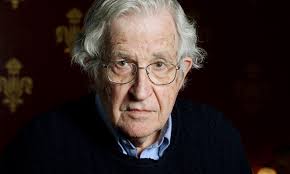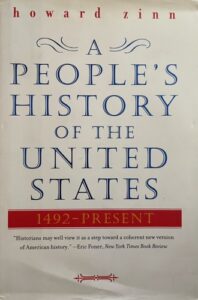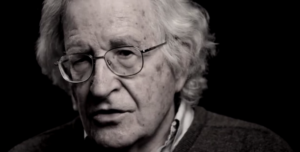
Noam Chomsky
Is the increasing influence of China in international affairs a threat to world order? The United States thinks so, and so does Britain, its closest ally. Indeed, the U.S.-China rivalry is likely to dominate world affairs in the 21st century. In this geostrategic game, certain states outside the western security community, such as India, are expected to play a key role in the new stage of imperialism under way. The U.S. is a declining power and can no longer dictate unilaterally; however, as Noam Chomsky underscores in this exclusive interview for Truthout, the decline of the U.S. is “mostly from internal blows.” As an imperial power, the U.S. poses a threat to world peace as well as to its own citizens. There is even a radical plan to dismantle whatever is left of U.S. democracy in the event that Trump returns to the White House in 2024. Other Republican winnable dictators could also enforce the plan. What’s next for U.S. imperial power, and its impact on the world stage?
Chomsky is institute professor emeritus in the department of linguistics and philosophy at MIT and laureate professor of linguistics and Agnese Nelms Haury Chair in the Program in Environment and Social Justice at the University of Arizona. One of the world’s most-cited scholars and a public intellectual regarded by millions of people as a national and international treasure, Chomsky has published more than 150 books in linguistics, political and social thought, political economy, media studies, U.S. foreign policy and world affairs. His latest books are The Secrets of Words (with Andrea Moro; MIT Press, 2022); The Withdrawal: Iraq, Libya, Afghanistan, and the Fragility of U.S. Power (with Vijay Prashad; The New Press, 2022); and The Precipice: Neoliberalism, the Pandemic and the Urgent Need for Social Change (with C.J. Polychroniou; Haymarket Books, 2021).
C.J. Polychroniou: Noam, western powers are responding to China’s rise as a dominant economic and military power with ever-increasing calls in favor of bellicose diplomacy. U.S. General Mark Milley, chairman of the Joint Chiefs of Staff, said during a recent trip to the Indo-Pacific that China has become more aggressive in the region and the Biden administration has described it as a “pacing threat.” Rishi Sunak, currently the leading candidate to replace outgoing prime minister Boris Johnson, said China is the U.K.’s “biggest threat.” Sunak has promised to ban Confucius Institutes, learning centers funded and run by an organization affiliated with the Chinese government, from the U.K. if he becomes the next prime minister. Why is the west so frightened of a prospering China and what does it say about imperialism in the 21st century?
Noam Chomsky: It may be useful to take a brief but broader look, first at the record of the fears, then at the geostrategic circumstances of their current manifestations. We are speaking here of the West in a narrow sense, specifically the Anglo-American “special relationship,” which since 1945 has been the United States with Britain a junior partner, sometimes reluctant, sometimes eager to serve the master, strikingly in the Blair years.
The fears are far-reaching. In the case of Russia, they go back to 1917. Secretary of State Robert Lansing warned President Wilson that the Bolsheviks were appealing “to the proletariat of all countries, to the ignorant and mentally deficient, who by their numbers are urged to become masters… a very real danger in view of the present social unrest throughout the world.”
Lansing’s concerns were reiterated in different circumstances by Secretary of State John Foster Dulles 40 years later, when he lamented that the U.S. is “hopelessly far behind the Soviets in developing controls over the minds and emotions of unsophisticated peoples.” The basic problem, he elaborated, is the Communist “ability to get control of mass movements . . . something we have no capacity to duplicate…. The poor people are the ones they appeal to and they have always wanted to plunder the rich.”
These are recurrent fears of the privileged, in one form or another, throughout history.
Scholarship substantially agrees with Lansing’s concerns. The acknowledged dean of Cold War scholarship, John Lewis Gaddis, traces the Cold War back to 1917, with the Bolshevik challenge “to the very survival of the capitalist order… a profound and potentially far-reaching intervention by the new Soviet government in the internal affairs, not just of the West, but of virtually every country in the world.” The Bolshevik intervention was what Lansing recognized: working people around the world might take note and react, the feared domino effect, a dominant theme in planning. Gaddis goes on to argue that the Western (including U.S.) invasion of Russia was a justified act of self-defense against this intolerable challenge to what is right and just, what is now termed “the rule-based international order” (in which the U.S. sets the rules).
Gaddis was appealing to a concept that the U.S. War Department in 1945 called “logical illogicality,” referring to the postwar plans for the U.S. to take control of most of the world and surround Russia with military force, while denying the adversary any comparable rights. The superficial observer might regard that as illogical, but it has a deeper logic, the War Department recognized — a logic called “imperialism” by the unkind.
The same doctrines of logical illogicality reign today as the U.S. defends itself from Eurasian threats. At the Western border of Eurasia, the U.S. defends itself by expanding to the Russian border the aggressive military alliance it runs, NATO. At the Eastern border, the U.S. defends itself by establishing a ring of “sentinel states” to “encircle” China, armed with high precision weapons aimed at China, backed with huge naval military exercises (RIMPAC) aimed not very subtly at China. All of this is part of the more extensive efforts at encirclements, jointly with “subimperialist” Australia, which we have discussed earlier, borrowing Clinton Fernandes’s term and analysis. One effect might be to increase the incentive for China to attack Taiwan in order to break out of the encirclement and have open access to the oceans.
Needless to say, there are no reciprocal rights. Logical illogicality.
Always the actions are in “self-defense.” If there was a violent power in history that wasn’t acting in “self-defense,” it would be helpful to be reminded of it.
Fear of China is more visceral, drawing from the deep racist currents that have poisoned American society since its origins. In the 19th century, Chinese people were kidnapped and brought to work as virtual slaves to build railroads as the nation expanded to its “natural borders”; the slur that was applied to them (“coolie”) was an import from Britain, where Chinese workers also served as virtual slave laborers generating Britain’s wealth. Chinese people who tried to settle were subjected to vicious racist attacks. Chinese laborers were banned entry for 10 years in the 1882 Chinese Exclusion Act, and Chinese were banned entirely in the racist 1924 immigration act, aimed primarily at Italians and Jews (sending many to gas chambers when entry to the U.S. was denied).
Yellow Peril hysteria was reawakened in the 1950s, after China’s stunning defeat of MacArthur’s army in Korea. The fears resonate often, ranging widely in nature. At one level, Lyndon Johnson warned that without superior air power, unless we stop “them” in Vietnam, “they” will sweep over us and take all “we” have. At another level, when Congress breaks its GOP-imposed logjam to pass legislation to reconstruct collapsing infrastructure and the crucial chip industry, not because the U.S. needs them but to overcome the challenge of China’s development.
There are others who pose imminent threats to our survival. Right now, Russia. The Chair of the House Permanent Select Committee on Intelligence, Adam Schiff, draws on deeply rooted cultural maladies when he warns that unless we stop them in Ukraine, they’ll be attacking our shores.
There is never a dearth of terrifying enemies, but the “heathen Chinese” have always conjured up special fears.
Let’s turn from understandable paranoia about the poor who want to plunder the rich to the second topic: world order and imperialism in the 21st century, and the intense U.S.-U.K. geopolitical concerns about an emergent China.
It’s useful to recall the experience of our predecessor in global dominance. An island off the coast of Europe, Britain’s primary concern was to prevent unification of Europe into a force beyond its control. Similarly, though magnified far beyond, the U.S. and its western hemisphere domains can be regarded as an “island” off the coast of the Eurasian land mass — which is the basis for world control according to the “heartland theory” of Halford Mackinder, a founder of modern geopolitics, whose thoughts are now being revived by global strategists.
Extending the logic of imperial Britain, then, we would expect the U.S. to be seeking to prevent unification of the “heartland” as an independent force, not subject to U.S. domination. The self-defense operations at the western and eastern ends of the heartland also fall into place.
Conflict over heartland unification has been a significant theme in post-WWII history. During the Cold War years, there were some European initiatives to construct a unified Europe incorporating Russia that would be an independent force in world affairs. Such ideas were advanced most prominently by Charles de Gaulle, with echoes in Germany. They were beaten back in favor of the Atlanticist system, NATO-based, largely run from Washington.
Heartland unification took on new prominence with the collapse of the Soviet Union. The idea of a “common European home” from Lisbon to Vladivostok was advanced by Mikhail Gorbachev, who looked forward to transition to social democracy in Russia and its former domains, and to a coequal partnership with the U.S. in creating a world order based on cooperation rather than conflict. These are topics of substantial scholarship, explored in unusual depth by historian Richard Sakwa.
Predictably, the U.S. — the island off the coast of Eurasia — strongly opposed these initiatives. Throughout the Cold War, they were not much of a problem given power relations and prevailing doctrine about the Kremlin conspiracy to conquer the world. The task took new forms with the collapse of the Soviet Union. With some wavering at the margins, the U.S. quickly adopted the policy of “enlargement” of the Atlantic power system, with Russia participating only on subordinate terms. Coequal partnership proposals continued to be put forth during the Putin years, until quite recently. They were “anathema to those who believe in enduring hegemony of the Atlanticist power system,” Sakwa observes.
Putin’s invasion of Ukraine, after dismissing tentative French and German efforts to avert the tragic crime, have settled the issue, at least for now. For now, Europe has succumbed to the Atlanticist doctrine, even adopting the formal U.S. goal of “weakening Russia” severely, whatever the cost to Ukraine and well beyond.
For now. Without integration, German-based Europe and Russia will very likely decline. Russia, with its enormous natural resources, is likely to continue to drift into the massive China-based Eurasian development project, the Belt-and-Road Initiative (BRI), now expanding to Africa and even Latin America.
The temptation for Europe to join the BRI system, already strong, will likely intensify. The German-based integrated production system in Europe, stretching from the Netherlands to Russia’s former Eastern European satellites, has become the most successful economic system in the world. It relies heavily on the huge export market and investment opportunities in China, and on Russia’s rich natural resources, even including metals needed for transition to renewable energy. Abandoning all of that, along with access to the expanding global BRI system, will be quite a price to pay for hanging on to Washington’s coattails. Such considerations will not be absent as the world system takes shape in the wake of the COVID crisis and Russia’s invasion of Ukraine.
The question of Eurasian integration in a common European home falls within a more general framework, which cannot be forgotten for a moment. Either the great powers will cooperate to face ominous global crises or they will march to oblivion together.
With the bitter antagonisms of today, it may seem impossible to imagine such cooperation. But it need not be an unattainable idea. In 1945 it seemed no less impossible to imagine that France, Germany, England, and smaller European powers could cooperate in a Western Europe without borders and with some common institutions. They are not without internal problems, and Britain has recently pulled out, dooming itself to becoming a probably fading U.S. satellite. Nonetheless, it is a stunning reversal of centuries of savage mutual destruction, peaking in the 20th century.
Taking note of that, Sakwa writes, “What for one generation is a sad delusion, for another becomes a realistic and necessary project.” A project that is essential if a livable world is to emerge from today’s chaos and violence.
China-Russia ties have deepened after Russia’s invasion of Ukraine, though there are probably limits to the partnership. In any case, is there something else in this strategic relationship between two autocratic nations besides the concern for limiting U.S. power and influence? And to what extent could the U.S. take advantage of potential strains and divisions in the Sino-Russian relationship as it did during the Cold War era?
The record during the Cold War is instructive. Even when Russia and China were close to war, the U.S. kept insisting on the immense threat posed by the imagined “Sino-Soviet alliance.” Something similar was true of North Vietnam. Its leaders recognized that their real enemy was China: the U.S. could devastate Vietnam with its incomparable means of violence, but it would go away. China would always be there, a permanent threat. U.S. planners refused to hear.
Kissinger’s diplomacy belatedly recognized the facts and exploited China-Russia conflicts. I don’t think that carries lessons for today. Circumstances are very different.
Putin and associates appear to have visions of a Russian sphere occupying an independent place between the Atlanticist and China-based global systems. That does not seem very likely to transpire. More likely China will accept Russia as a subordinate, providing raw materials, advanced weapons, scientific talent, maybe more.
The Atlanticist powers along with their Asian subimperial associates are becoming isolated in the world scene. The Global South is mostly standing aloof, not joining in sanctions against Russia or breaking commercial and other relations. Though it has serious internal problems, China keeps moving ahead with its vast development, investment, loan programs abroad and technological progress at home. It is far in the lead in the fast-growing sustainable energy sector and has just surprised the world by creating a super-advanced chip, still probably years short of production but a central part of the modern advanced economy.
There are many uncertainties, but it seems a fair guess that these tendencies will persist. If there is a break, it may be unwillingness of German-based Europe to continue to suffer the effects of subordination in the Atlanticist system. The advantages of a common European home may well become increasingly tempting, with major consequences for world order.
India is being wooed by China, Russia and the U.S. Does India have anything to worry about in a strong Sino-Russian partnership? Can the Quad rely on India for full cooperation in connection with its mission and objectives in the Indo-Pacific region?
Before discussing India’s foreign policy concerns, let’s not forget some stark facts. South Asia is facing major catastrophe. Summer heat is already at a level that is barely survivable for the vast poor majority, and much worse is coming. India and Pakistan must cooperate on this and related crises, like management of dwindling water resources. Instead, each is devoting scarce resources to unwinnable wars, for Pakistan an intolerable burden.
Both states have severe internal problems. In India, PM Modi has been leading an effort to destroy India’s secular democracy, which, with all its flaws, is still one of the great achievements of the post-colonial era. His program is aimed at creating a racist Hindu ethnocracy. He is a natural associate in the growing alliance of states with similar characteristics: Hungary along with Israel and its Abraham Accord partners, closely linked with the core sectors of the GOP. That’s aside from the brutal repression of Kashmir, reportedly the most militarized territory in the world and the scene of harsh repression. The occupation of foreign territory again qualifies him for association with the Abraham accords, which bring together the other two cases of criminal annexation and occupation, Israel and Morocco.
All of that is part of the background for addressing the serious questions of India’s international relations.
India is engaged in a difficult balancing act. Russia remains by far its major source of arms. It is engaged in a long and worsening border dispute with China. It therefore must eye with concern a deepening Russia-China alliance. The U.S.-run Quad (U.S.-Japan-Australia-India) is intended to be a core part of the encirclement of China, but India is a reluctant partner, unwilling to fully adopt the subimperial role. Unlike the other members of the Quad, it joins the rest of the Global South in refusing to become embroiled in what they see as a U.S.-Russia proxy war in Ukraine. India cannot however move too far in alienating the U.S., which is also a natural ally, particularly so in the framework of the emerging GOP-centered alliance of reactionary states.
Altogether, a complex situation, even overlooking the enormous internal problems facing South Asia.
The U.S. is a country in political and social turmoil and possibly in the midst of a historic transition. Its influence in the world has been weakening in recent years and its institutions are under severe attack from dark and reactionary forces. Indeed, with U.S. democracy in sharp decline, there is even talk of a radical plan for the restructuring of the federal government in the event that Donald Trump returns to power in 2024. To what extent has imperial overstretch contributed to the decline of the domestic society, and to what degree can domestic politics have an effect on foreign policy decision-making? In either case, is a declining U.S. less or more likely to represent a threat to global peace and security?
There has been much talk of U.S. decline for decades. There is some truth to it. The peak of U.S. power, with no historical parallel, was in 1945. That obviously couldn’t last and has been declining since, though by some measures U.S. power remains about as it was then, as Sean Kenji Starrs shows in his important studies of control of wealth by transnationals.
There is a great deal to say about this general topic, discussed elsewhere. But keeping to the narrower question raised, recent U.S. decline is mostly from internal blows. And it is severe. One crucial measure is mortality. The headline of one recent study reads: “America Was in an Early-Death Crisis Long Before COVID.” The study goes on to show that “Even before the pandemic began, more people here were dying at younger ages than in comparably wealthy nations.” The data are startling, going well beyond even the “deaths of despair” phenomenon among working-age white Americans that has led to increasing mortality, something unheard of apart from war and pestilence. That is only one striking indication of how the country has been falling apart socioeconomically and politically since the neoliberal assault took shape with Reagan-Bush, Clinton, and their successors.
The “radical plan” to undermine the remnants of American democracy was announced a few days before the November election, and quickly forgotten in the ensuing turmoil. It was revealed only recently in an Axios investigation. The basic idea is to reverse the programs since the 19th century to create an apolitical civil service, an essential foundation for a functioning democracy. Trump issued an executive order giving the president (intended to be him, or maybe more accurately Him) the authority to fill the top ranks of the civil service with loyalists, a step towards the fascist ideal of a powerful party with a Maximal Leader that controls the society. Biden reversed the order. Congressional Democrats are seeking to pass legislation to bar such a direct attack on democracy, but Republicans are unlikely to go along, anticipating that their many current initiatives to establish their permanent rule as a minority party will bear fruit. The reactionary Roberts Court might well approve.
More may be in store. The Court decided to take up an outlandish case, Moore v. Harper, which, if the Court approves, would permit state legislatures, mostly Republican because of well-known GOP structural advantages, to pick electors who reject the popular vote and keep to party loyalty. This “independent state legislature theory” does have some constitutional basis but has been considered so outrageous that it has been dismissed — until now, as the GOP hurtles forward in its campaign to hold on to power no matter what the irrelevant population wants.
It doesn’t seem to me that the GOP campaign to undermine democracy results from imperial overstretch. There’s a good deal of valuable scholarship about its nature and roots, which seem to lie elsewhere, primarily in search for power.
It’s not clear what the impact would be on foreign policy. Trump himself is a loose cannon, with no clear idea in his head apart from ME! He also has a penchant for wrecking whatever anyone else has helped construct — while always adhering very closely to the primary principle: Enrich the super-rich and corporate power, at least that part that doesn’t veer to some criticism of his august majesty. His GOP competitors are in such awe and fear of his power over the mass voting base that they say very little.
The general implications for global peace and security seem clear enough. Trump’s triumphs in this domain were to greatly enhance the two major threats to survival of organized human society: environmental destruction and nuclear war. Neither were spared his wrecking ball. He pulled out of the Paris agreements on impending climate catastrophe, and did what he could to eliminate regulations that somewhat mitigate the effects on Americans. He carried forward the GOP program (started by G.W. Bush) to dismantle the arms control regime that has been laboriously constructed to reduce the threat of terminal nuclear war. He also wrecked the Joint Agreement with Iran on nuclear policy (JCPOA), violating the UN Security Council endorsement of the Agreement, again enhancing global threats.
What he might do on particular issues is anyone’s guess. Perhaps what he had just heard on Fox News.
The idea that the future of the world might soon again be in such hands almost surpasses belief.
There’s no shortage of vital tasks ahead.
Copyright © Truthout. May not be reprinted without permission.
C.J. Polychroniou is a political scientist/political economist, author, and journalist who has taught and worked in numerous universities and research centers in Europe and the United States. Currently, his main research interests are in U.S. politics and the political economy of the United States, European economic integration, globalization, climate change and environmental economics, and the deconstruction of neoliberalism’s politico-economic project. He is a regular contributor to Truthout as well as a member of Truthout’s Public Intellectual Project. He has published scores of books and over 1,000 articles which have appeared in a variety of journals, magazines, newspapers and popular news websites. Many of his publications have been translated into a multitude of different languages, including Arabic, Chinese, Croatian, Dutch, French, German, Greek, Italian, Japanese, Portuguese, Russian, Spanish and Turkish. His latest books are Optimism Over Despair: Noam Chomsky On Capitalism, Empire, and Social Change (2017); Climate Crisis and the Global Green New Deal: The Political Economy of Saving the Planet (with Noam Chomsky and Robert Pollin as primary authors, 2020); The Precipice: Neoliberalism, the Pandemic, and the Urgent Need for Radical Change (an anthology of interviews with Noam Chomsky, 2021); and Economics and the Left: Interviews with Progressive Economists (2021).

 Geschiedenis is niet een opsomming van droge feiten die uit het hoofd geleerd dienen te worden, maar een aaneenschakeling van gebeurtenissen in het verleden, die doorwerken tot op de dag van vandaag. De actualiteit is onlosmakelijk gekoppeld aan het verleden, meende Zinn, en door het in die context te plaatsen, door lijnen uit het verleden naar het heden door tetrekken, helpt geschiedenis ons om een mening te kunnen vormen en ons handelen te kunnen bepalen. Het kreeg bovendien een vervolg in 2004 met Voices of a People’s History of the United States, een boek met artikelen, toespraken, poëzie, songteksten, essays en andere bijdragen van ‘gewone’ Amerikanen. Later verscheen opnieuw een vervolg: een dvd getiteld The People Speak, gewijd aan mensen die in opstand kwamen tegen onrecht en onrechtvaardigheid, met bijdragen van Zinn zelf, acteurs Matt Damon en Morgan Freeman, Eddie Vedder, Bruce Springsteen, Bob Dylan en anderen.
Geschiedenis is niet een opsomming van droge feiten die uit het hoofd geleerd dienen te worden, maar een aaneenschakeling van gebeurtenissen in het verleden, die doorwerken tot op de dag van vandaag. De actualiteit is onlosmakelijk gekoppeld aan het verleden, meende Zinn, en door het in die context te plaatsen, door lijnen uit het verleden naar het heden door tetrekken, helpt geschiedenis ons om een mening te kunnen vormen en ons handelen te kunnen bepalen. Het kreeg bovendien een vervolg in 2004 met Voices of a People’s History of the United States, een boek met artikelen, toespraken, poëzie, songteksten, essays en andere bijdragen van ‘gewone’ Amerikanen. Later verscheen opnieuw een vervolg: een dvd getiteld The People Speak, gewijd aan mensen die in opstand kwamen tegen onrecht en onrechtvaardigheid, met bijdragen van Zinn zelf, acteurs Matt Damon en Morgan Freeman, Eddie Vedder, Bruce Springsteen, Bob Dylan en anderen. Toekomst
Toekomst






